I go out of my way to ensure my horses are soft and supple so that I can move their bodies from the tips of their noses to their tails off a feather-light touch. The softer and suppler your horse is, the better you’ll be able to shape his body and get him to perform specific maneuvers.
One of the biggest complaints I receive from barrel racers is when their horses get on the pattern, they take over and tune their riders out. It becomes impossible for the riders to rate or shape their horses around the barrels.
My answer to that problem is to get the horses better broke, meaning teaching them to give to pressure and gaining control of their five body parts—the head and neck, poll, shoulders, ribcage and hindquarters. That way, when you run the pattern with them, they stay tuned in to you and you can control them.
Here are two dry-work exercises to practice with your barrel horse, or any horse you’d like to get more handle on. It’s a good way to spice up a training session or make good use of a limited riding area.
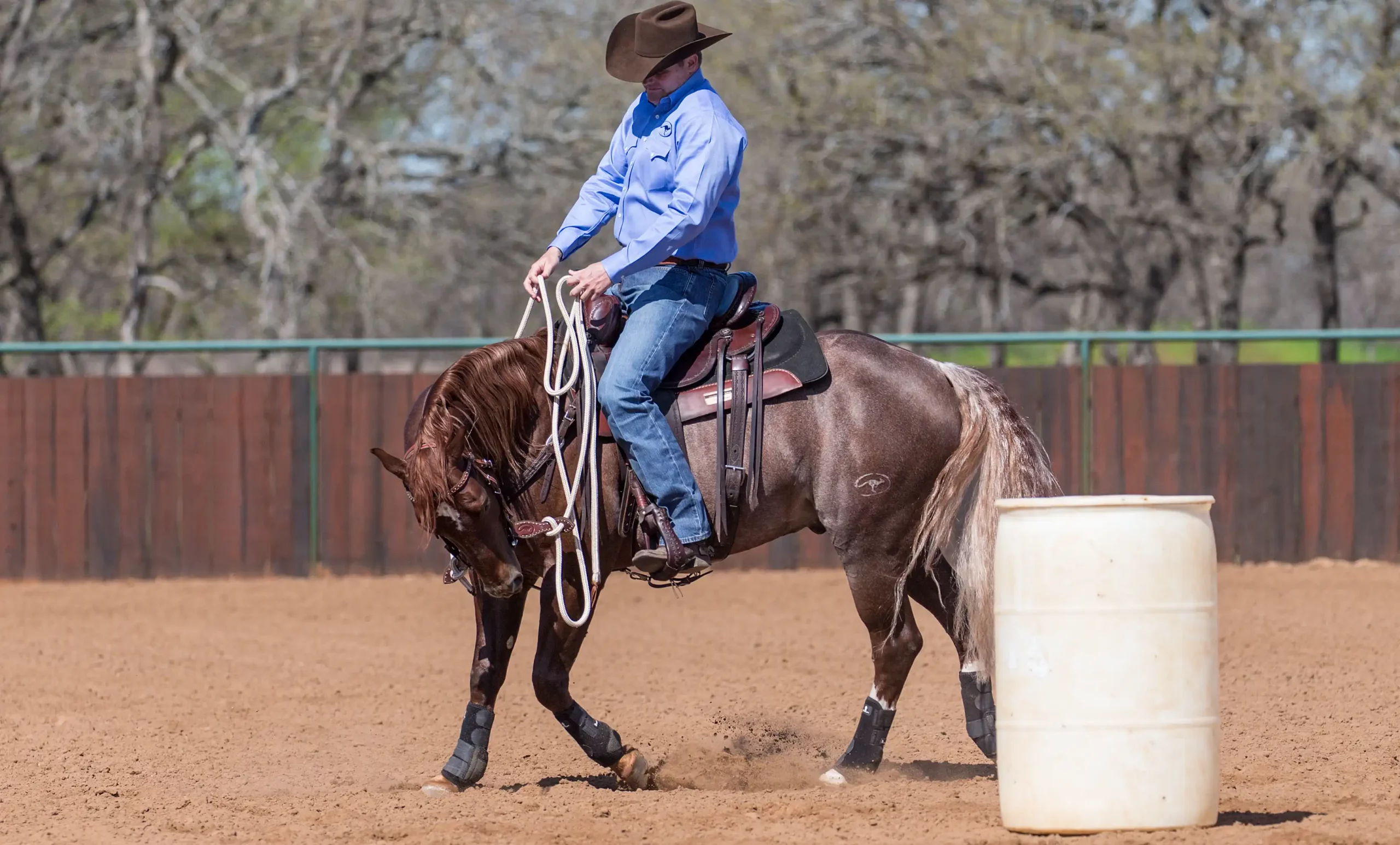
Spiral In and Out of Barrels
Bridle your horse up and ask him to jog in a tight circle that’s about 10 to 15 feet in diameter around the barrel. Use the inside rein (the rein closest to the barrel) to steer the horse around the barrel and your outside leg (the one farthest from the barrel) to encourage his shoulders to follow his nose. As the horse is circling the barrel, “hunt” the barrel by never taking your eyes off of it. The horse should be hustling his feet around it.
After you’ve completed two circles, push the horse 2 feet out onto the circle by pressing up by the girth with your inside leg and opening a door for him to move through with your outside rein. If you were circling your horse around the barrel counterclockwise like I’m doing here with Jackson, you’d use your left leg to press his shoulder over and you’d open the door with the right rein.
The horse should continue to stay soft in your hands and hustle around the circle. There’s not much benefit to the exercise if you let your horse drag his feet and lollygag around the circle.
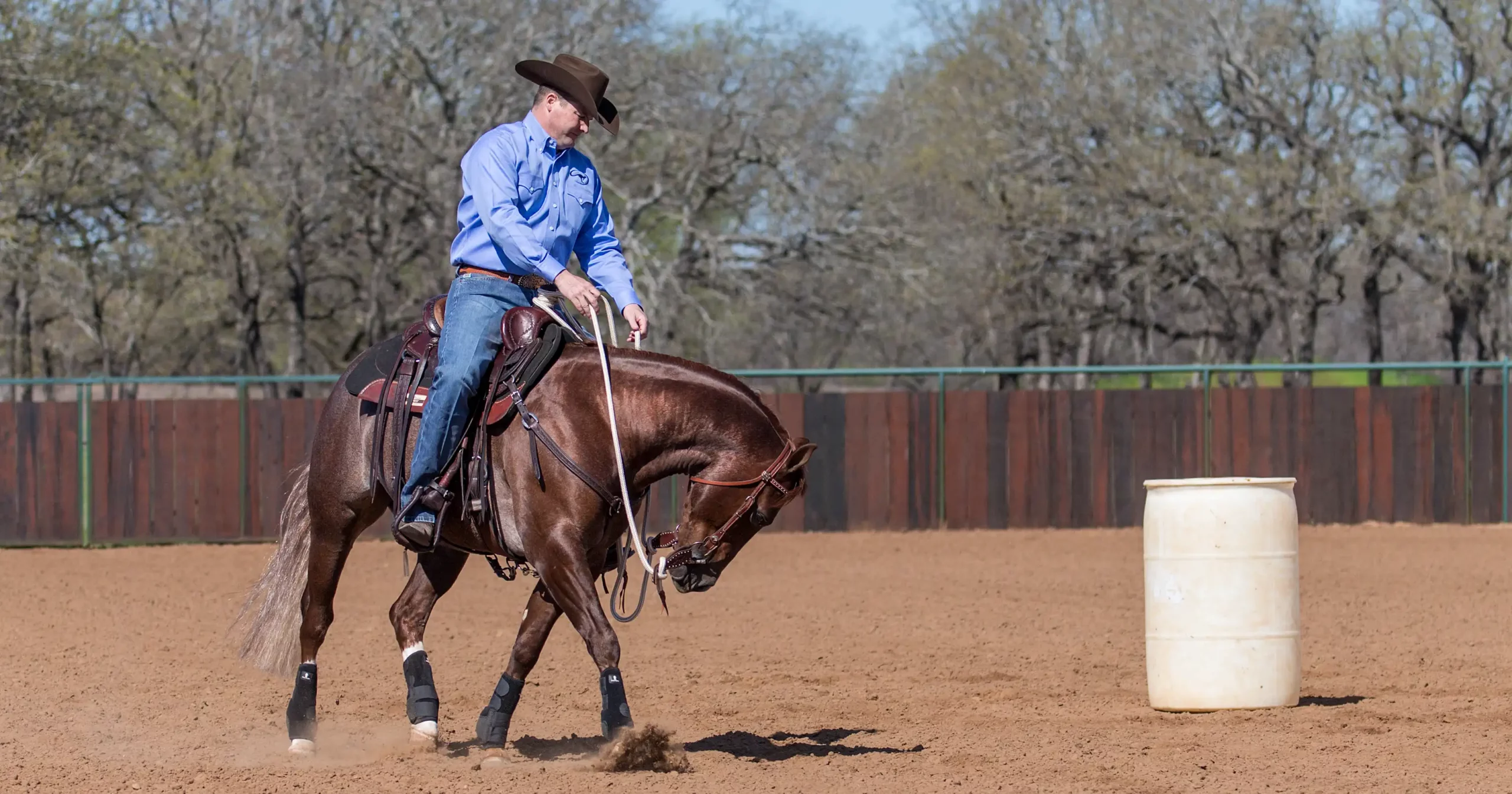
Complete two circles and then push the horse out onto the circle another 2 feet. This exercise reinforces to the horse that you can pick his shoulder up and move it out of the circle. A lot of horses will dive into the barrel as they approach it and push through the turn with their shoulders, which often makes the barrel tip over.
Even if you’re not a barrel racer, this drill is beneficial in teaching the horse to pick up his shoulders when you’re doing circles or turning in general.
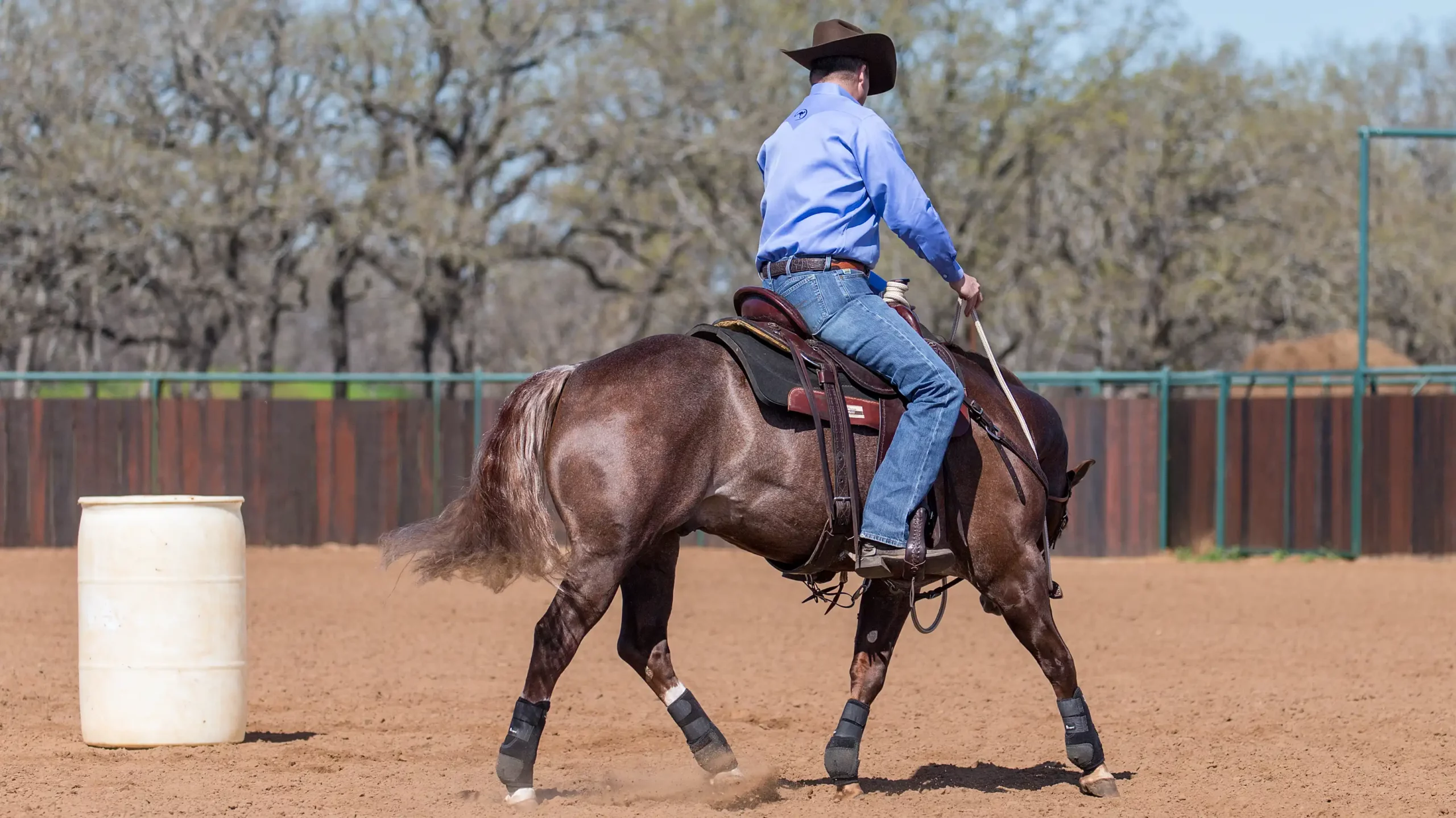
After trotting two circles around the barrel, start to spiral back into the barrel by pushing the horse 2 feet back into the circle. Press up near the girth with your outside leg and use your inside rein to guide the horse closer to the barrel. If you were circling the barrel counterclockwise like I’m doing here, you’d use your right leg to move the horse’s shoulder into the circle and open the door with the left rein.
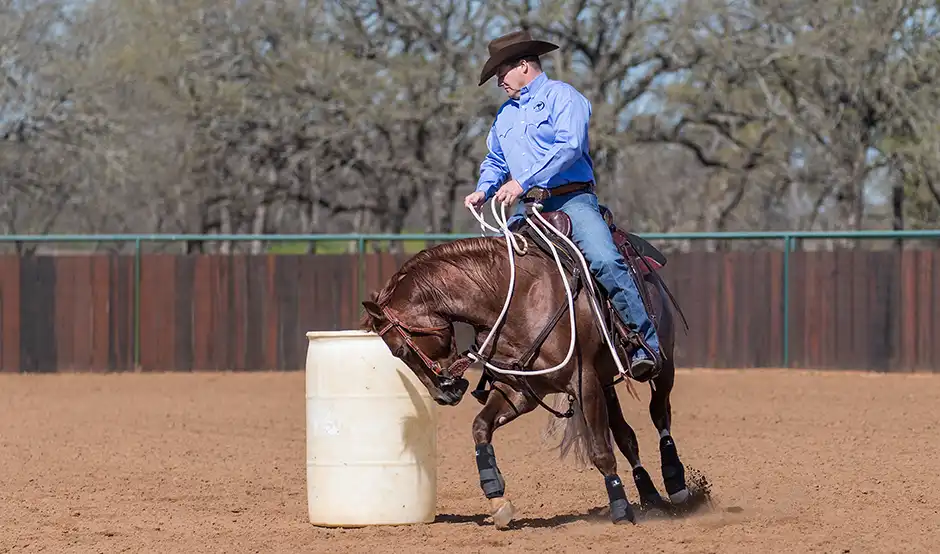
Every two circles, press the horse about 2 feet into the circle until you’re circling 10 to 15 feet away from the barrel. Then change directions so that you’re going the opposite way around the barrel and repeat the exercise. You’ll notice that your horse will likely be stiffer and pushier on one side of his body compared to the other. That’s normal. Spend two-thirds of your time practicing the exercise on his stiffer side and a third of your time on the side he’s more responsive on.
Counterbend Into a Rollback
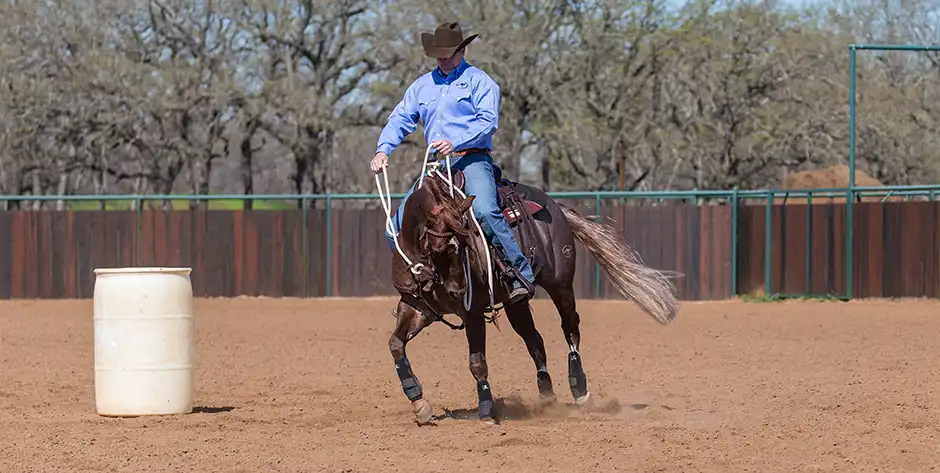
Bridle your horse up and trot a 20-foot circle around the barrel. Ask the horse to counterbend around the barrel by picking up on the direct rein and pulling it up and over so that it is in line with your belly button. The rein should just be pressing against the horse’s neck. You want to tip his nose so that you can just see his eye.
Then pull the indirect rein down low and out to the side. If it helps, you can point out to the side with your little finger, showing where you want the horse’s shoulders to go.
At the same time, press up near the horse’s girth with your inside leg to drive his shoulders around in the circle.
Every time the horse gives to the bit pressure, push your hands forward, even if it’s only for a split second. If he leans on your hands, use driving pressure to bump him off the bit. As soon as he gives, release your hands forward to reward him. In this photo, the left rein is my direct rein, the right rein is my indirect rein and I’m using my left leg to drive the horse’s shoulders around in the circle.
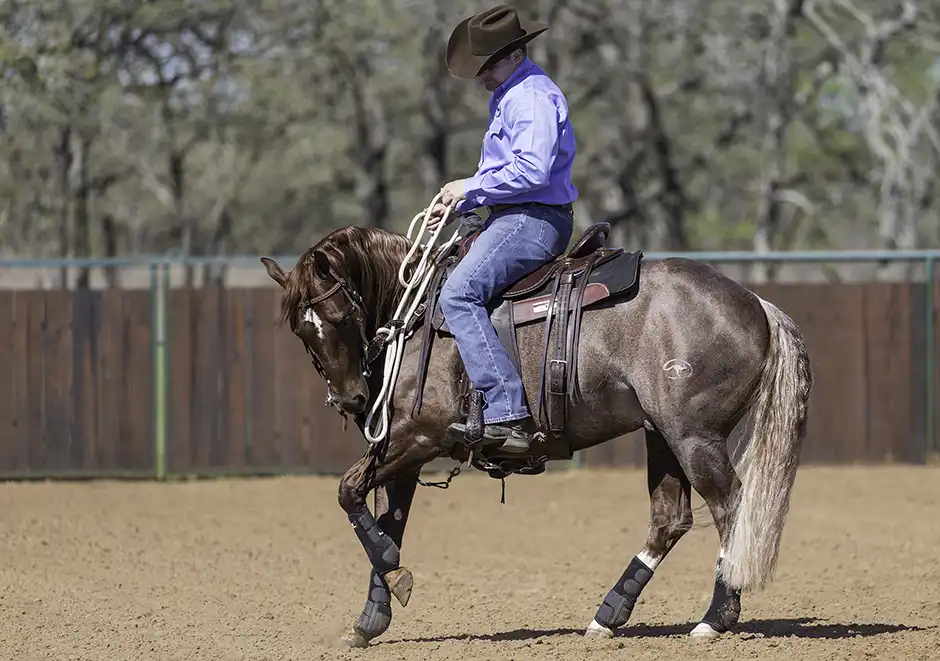
After trotting three circles around the barrel or when the horse is soft in your hands, ask him to stop and back up a couple of steps, continuing to hold the shape he was in when he was counterbending.
Asking the horse to stop and back up rocks him back on his hindquarters and reminds him to stay off the bridle. If the horse is stiff and resistant, continue to back him up for more than two steps until he is soft in your hands.
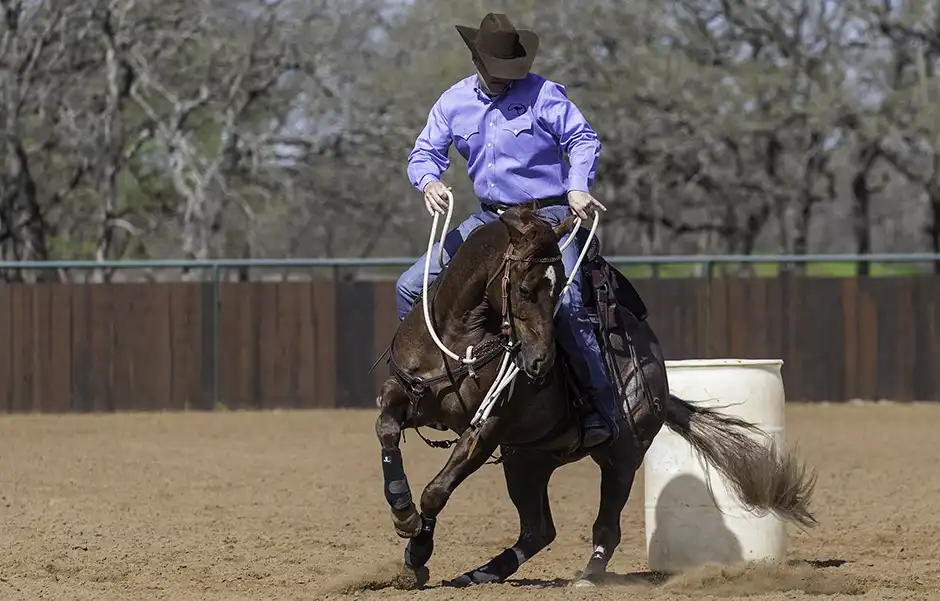
Then do a 180-degree rollback away from the barrel. To roll the horse back, take your inside leg off and then press with your outside leg up by his shoulder to drive him through the turn. In this photo, I took my left leg off and cued Jackson to roll back with my right leg.
Since the horse is already shaped correctly for the rollback, meaning that his nose is tipped in the direction you’ll ask him to turn in, all you have to do is change the position of your legs to cue him to roll back.
Look for the rollback to be slow and correct rather than fast and choppy.
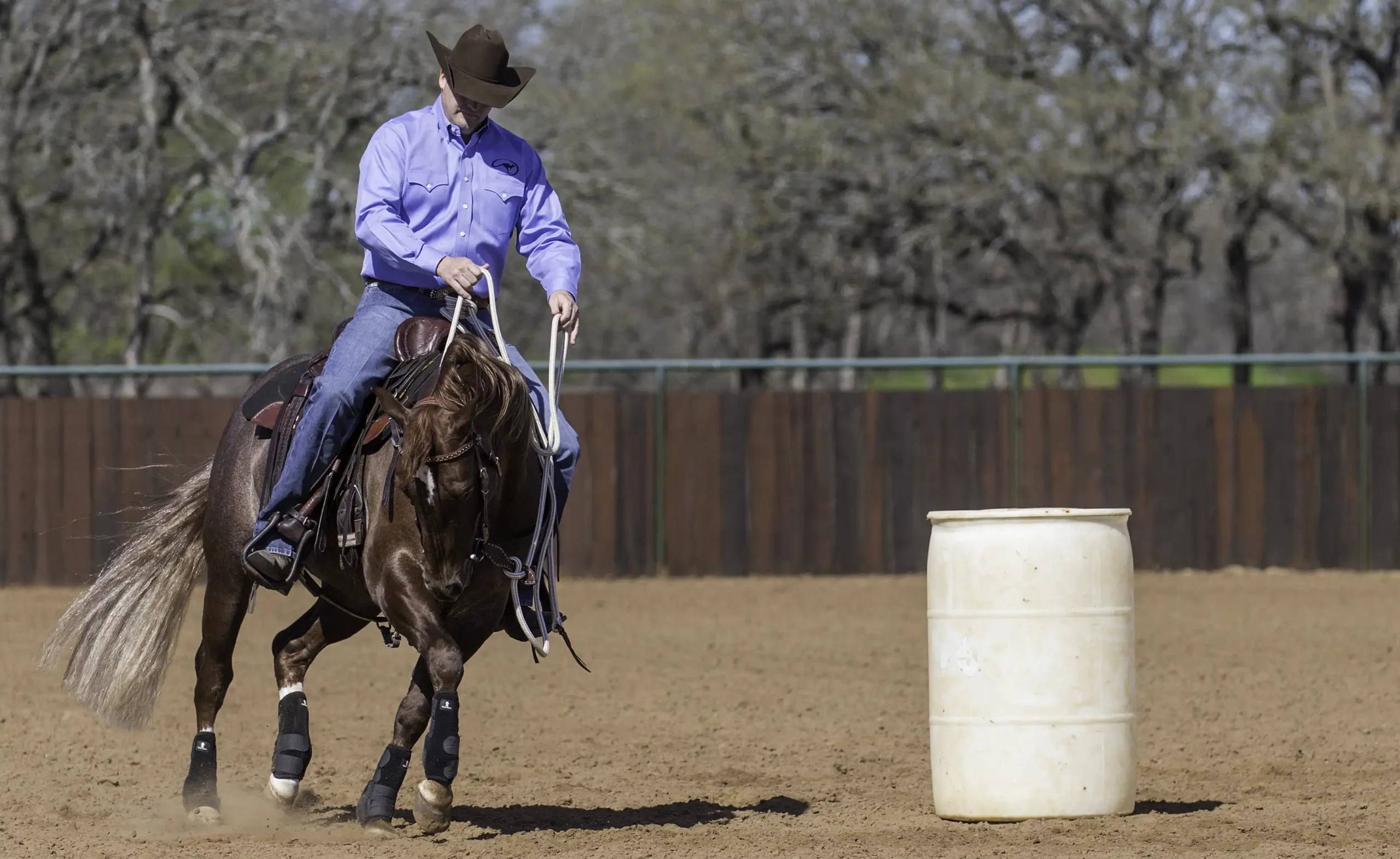
As soon as he comes out of the rollback, take him straight back into a counterbend and circle the barrel going in the opposite of the direction you were initially going in. In this photo, now that I’ve changed directions, my right rein is my direct rein, my left rein is my indirect rein and I’m using my right leg to move Jackson’s shoulders around in the circle.
You want to be able to shape and move every part of your horse’s body without resistance, and this exercise is a good test to see how soft and supple your horse is. Being able to counterbend your horse gives you the ability to correct him if he dives into a circle or drops his shoulder. You’ll be able to pick his shoulder up and push him back out straight. The more control you have of the horse’s shoulders, the better steering wheel you’ll have.
Which Rein is Which?
Direct Rein
The direct (or inside) rein is always the rein that is being used to tip the horse’s nose. So if his nose is bent to the left, the left rein is the direct rein.
Indirect Rein
The indirect (or outside) rein is the opposite rein (whichever way the horse’s head isn’t bent). So if the horse’s head is bent to the left, the right rein would be your indirect rein.

Master Your horsemanship Skills
Like these tips? Join the No Worries Club and hone your skills with thousands of hours of Clinton’s easy, step-by-step method horse training videos.



